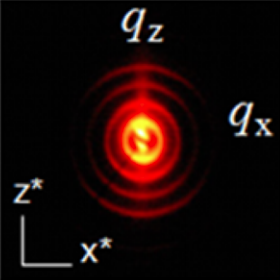Abstract
The effects of molecular weight and microdomain orientation on the ionic conductivities of poly(styrene-b-methyl methacrylate) diblock copolymer/1-ethyl-3-methylimidazolium bis(trifluoromethylsulfonyl)imide (SM/IL) mixtures are assessed through complementary experimental and theoretical techniques. Small-angle X-ray scattering revealed that SM/IL mixtures have anisotropic lamellar morphologies, preferentially oriented parallel to the casting substrate. A method for quantifying the morphology factor, or microdomain orientation within the Sax–Ottino model, using 2-D SAXS data is presented and applied to SM/IL mixtures. Ionic conductivity increases by up to an order of magnitude with a 2-fold increase in molecular weight, even when accounting for the morphology type, composition, microdomain orientation, and PMMA/IL glass transition temperature. Self-consistent field theory calculations predict a nonuniform solvent distribution in PMMA/IL microdomains, suggesting that polymer mobility and ion transport are reduced near PS–PMMA microdomain interfaces. Thus, the increase in ionic conductivity with increasing block copolymer molecular weight is associated with having fewer PS–PMMA/IL interfaces per unit volume.
